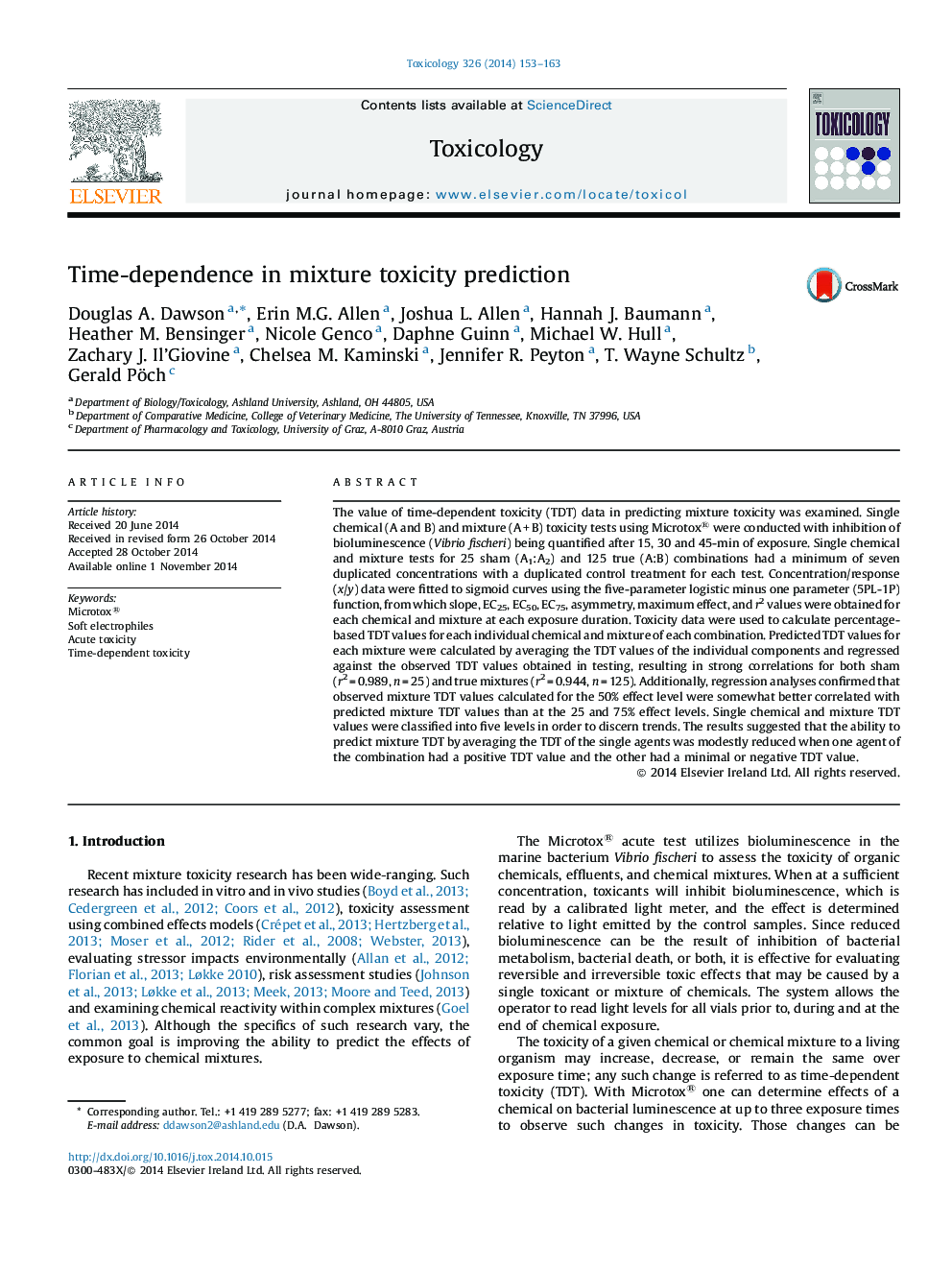| Article ID | Journal | Published Year | Pages | File Type |
|---|---|---|---|---|
| 2595515 | Toxicology | 2014 | 11 Pages |
The value of time-dependent toxicity (TDT) data in predicting mixture toxicity was examined. Single chemical (A and B) and mixture (A + B) toxicity tests using Microtox® were conducted with inhibition of bioluminescence (Vibrio fischeri) being quantified after 15, 30 and 45-min of exposure. Single chemical and mixture tests for 25 sham (A1:A2) and 125 true (A:B) combinations had a minimum of seven duplicated concentrations with a duplicated control treatment for each test. Concentration/response (x/y) data were fitted to sigmoid curves using the five-parameter logistic minus one parameter (5PL-1P) function, from which slope, EC25, EC50, EC75, asymmetry, maximum effect, and r2 values were obtained for each chemical and mixture at each exposure duration. Toxicity data were used to calculate percentage-based TDT values for each individual chemical and mixture of each combination. Predicted TDT values for each mixture were calculated by averaging the TDT values of the individual components and regressed against the observed TDT values obtained in testing, resulting in strong correlations for both sham (r2 = 0.989, n = 25) and true mixtures (r2 = 0.944, n = 125). Additionally, regression analyses confirmed that observed mixture TDT values calculated for the 50% effect level were somewhat better correlated with predicted mixture TDT values than at the 25 and 75% effect levels. Single chemical and mixture TDT values were classified into five levels in order to discern trends. The results suggested that the ability to predict mixture TDT by averaging the TDT of the single agents was modestly reduced when one agent of the combination had a positive TDT value and the other had a minimal or negative TDT value.
